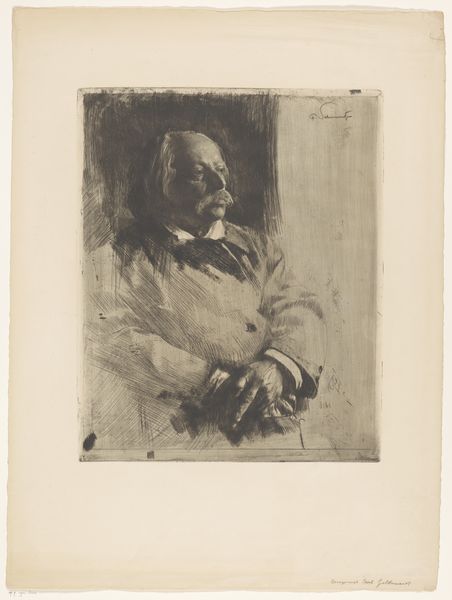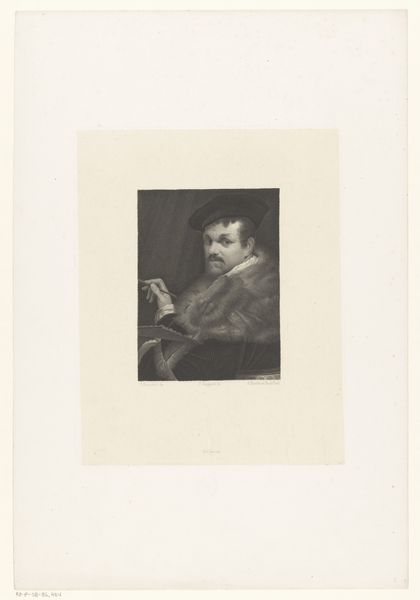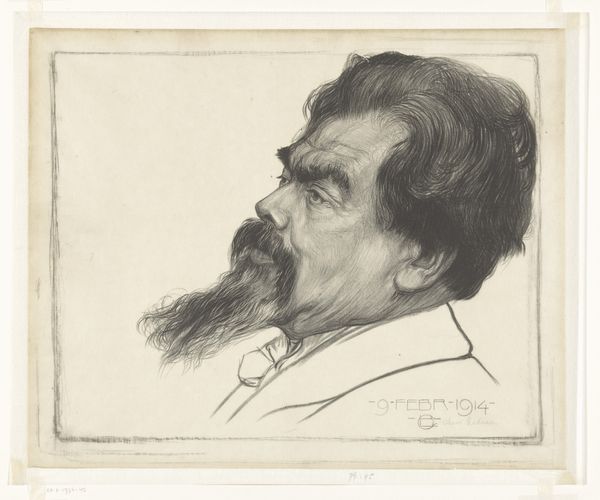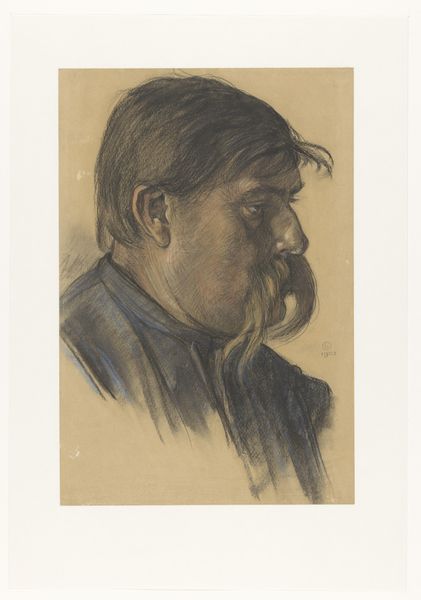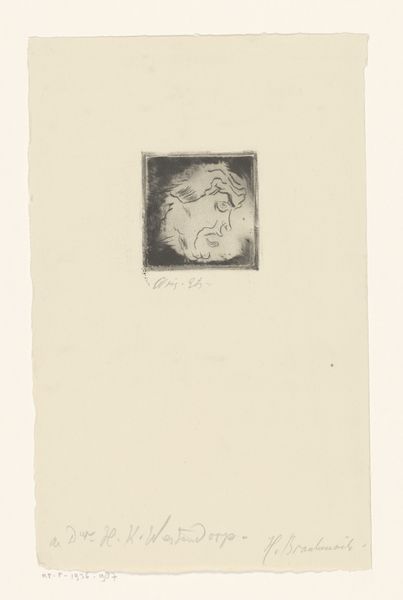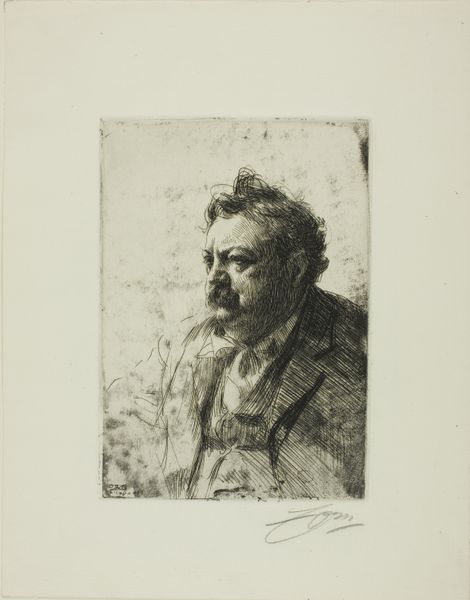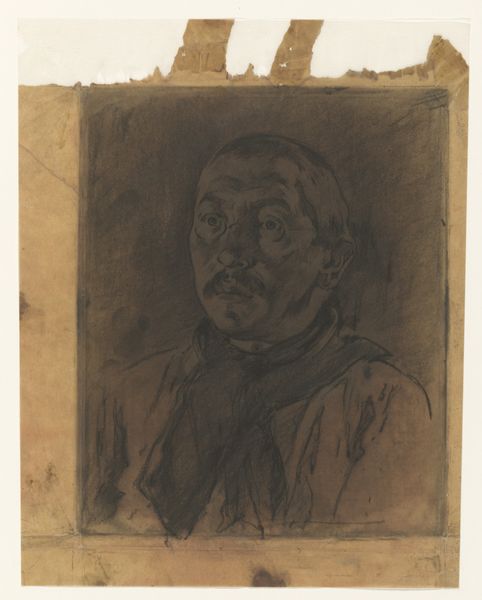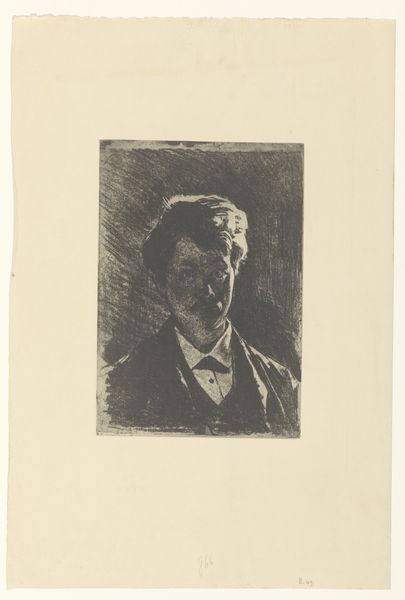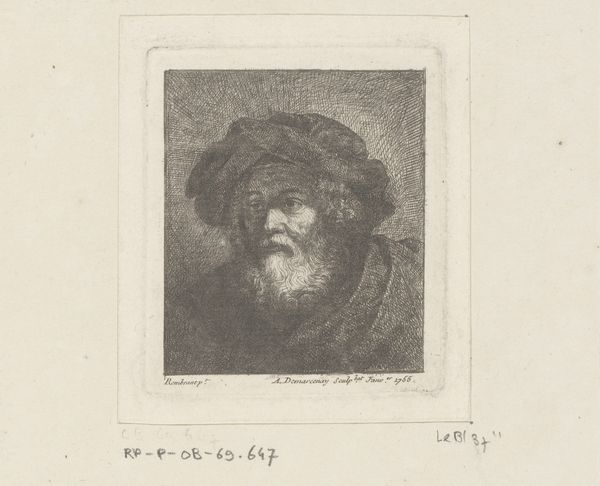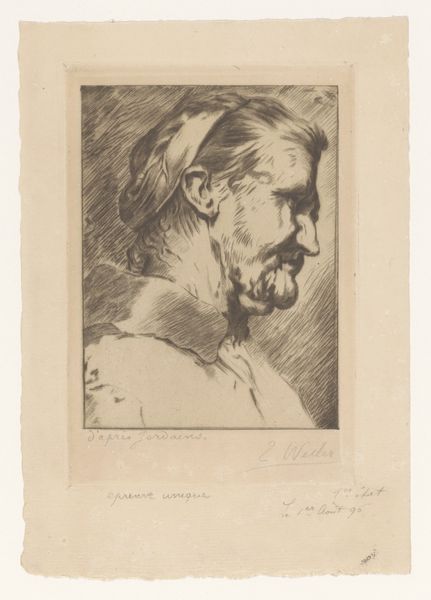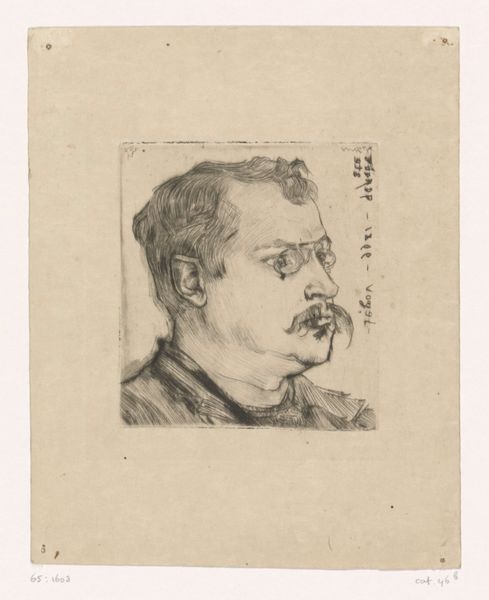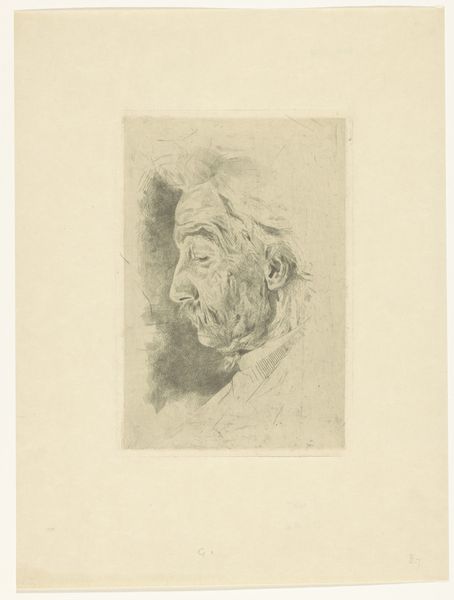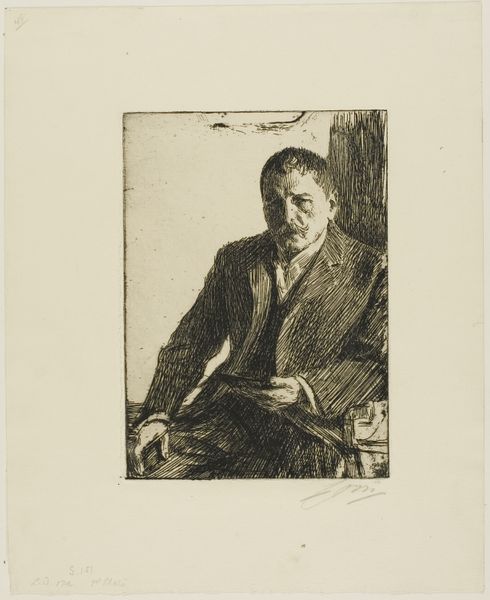
drawing, graphic-art, print, etching
#
portrait
#
pencil drawn
#
drawing
#
graphic-art
#
self-portrait
# print
#
etching
#
pencil sketch
#
pencil drawing
#
pencil work
Dimensions: height 59 mm, width 46 mm
Copyright: Rijks Museum: Open Domain
Curator: Welcome. Before us is "Zelfportret," or Self-Portrait, by Chris van der Windt. It’s a compelling etching and print, created sometime between 1907 and 1927. Editor: I’m immediately drawn to the intimacy of it. It feels like catching someone in a private moment, a stolen glance almost. The heavy shadows amplify that secretive mood. Curator: Absolutely. Van der Windt’s choice of etching lends itself to that feeling. Its origins lie in printmaking, making artwork available to wider audience through accessible reproduction and collection of artworks by connoisseurs from a range of social classes. What this choice signals for you, especially in terms of self-representation? Editor: Well, the darkness softens the details of his face; it isn't overly precise, but evocative. This could suggest he's more interested in conveying a feeling, an essence, rather than a photorealistic depiction. It almost masks the self, hinting at introspection rather than outward presentation. I think his slight smile makes it all work--it's endearing! Curator: It's intriguing how that softness plays against the historical context of portraiture, where a certain level of idealization was often expected, especially for the self. This particular approach and production, does it hint to the way artists understood them as being part of this printmaking community? Editor: Maybe. Or maybe it’s van der Windt being deliberately vulnerable in a new artistic environment, right? I feel it comes across as raw and unguarded, offering the viewer a kind of unexpected peek inside the artist's interiority that may connect with him as a person more than someone creating art. Curator: Interesting. The rise of psychoanalysis during this time could suggest, in contrast, that such displays and explorations of internal psychology might have in fact been encouraged and commodified. Editor: Hmm, point taken. Regardless, I still find the drawing to be honest in this very candid setting. Curator: Indeed. It’s these complexities and seeming contradictions, between revelation and obfuscation, availability and seclusion, that really make this artwork stick with me. Editor: Agreed. It invites us to consider the many faces we show, both to ourselves and the world. Food for thought.
Comments
No comments
Be the first to comment and join the conversation on the ultimate creative platform.
